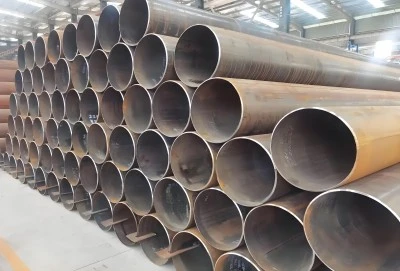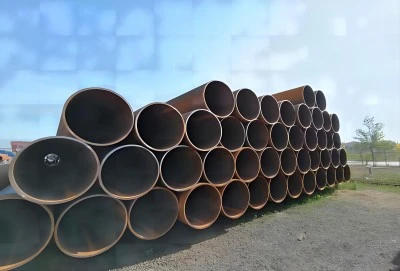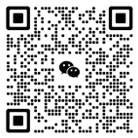Visual Inspection:
Visual inspection is the first and fundamental step in assessing the quality of API 5L X56 pipe. This process involves a thorough examination of the pipe's surface condition, both internally and externally, to identify any visible defects or irregularities that could compromise the pipe's performance and integrity. During visual inspection, qualified inspectors examine the pipe surface for various defects including scratches, dents, gouges, and surface laminations. The inspection process pays particular attention to the pipe ends, where damage during handling and transportation is most likely to occur. Inspectors also check for proper identification markings, including heat number, manufacturer's name, and specification details as required by API 5L standards.
The internal surface inspection requires adequate lighting and may utilize specialized equipment such as borescopes or remote visual inspection tools for pipes with smaller diameters. Inspectors look for internal surface defects, cleanliness, and the quality of internal coating if applicable. Any signs of corrosion, pitting, or manufacturing defects are carefully documented and evaluated against acceptance criteria. The weld seam, if present, receives special attention during visual inspection. Inspectors examine the weld profile, alignment, and surface condition for any irregularities that might indicate welding defects or quality issues. The inspection also verifies that the weld reinforcement height meets specification requirements.
|
|
|
Dimensional Inspection:
Dimensional inspection of API 5L X56 pipe involves precise measurements to verify compliance with specified geometric requirements. This includes checking the pipe diameter, wall thickness, length, straightness, and end squareness. Accurate dimensional control is crucial for ensuring proper fit-up during installation and maintaining structural integrity during service. Wall thickness measurements are typically performed using ultrasonic thickness gauges at prescribed intervals along the pipe length and circumference. These measurements verify the uniformity of wall thickness and compliance with minimum thickness requirements. Special attention is paid to areas near the weld seam and pipe ends where variations in thickness are more likely to occur.
Out-of-roundness (ovality) measurements are conducted using specialized gauges or calibrated measuring devices. The pipe diameter is measured at multiple points around the circumference to ensure it remains within acceptable tolerances. End squareness is verified using appropriate measuring tools to ensure proper alignment during pipeline assembly. Length measurements are performed using calibrated measuring devices, and straightness is checked using straightedges or laser-based measurement systems. All dimensional measurements are documented and compared against the tolerances specified in API 5L and any additional customer requirements.
Material Testing:
Material testing for API 5L X56 pipe encompasses a comprehensive series of mechanical and chemical tests to verify the pipe material's properties and performance characteristics. These tests are crucial for ensuring the pipe meets the strength, toughness, and durability requirements for its intended service conditions. Chemical analysis is performed to verify the material composition falls within specified ranges for various elements including carbon, manganese, phosphorus, and sulfur. Modern testing methods such as optical emission spectroscopy provide rapid and accurate analysis of material chemistry. The chemical composition directly influences the pipe's mechanical properties and weldability.
Mechanical testing includes tensile tests to verify yield strength, tensile strength, and elongation properties. Test specimens are prepared according to standardized procedures and tested using calibrated equipment. Impact testing, such as the Charpy V-notch test, evaluates the material's toughness and resistance to brittle fracture at specified temperatures. Hardness testing is conducted to verify material hardness falls within acceptable ranges and to check for uniformity of properties. Additional tests may include bend tests, flattening tests, and hydrostatic tests depending on the specific requirements of the application and customer specifications.
Pressure Testing:
Pressure testing is a critical quality verification step for API 5L X56 pipes, designed to confirm the pipe's structural integrity and leak-tightness under pressure. The most common method is hydrostatic testing, where pipes are pressurized with water to a specified test pressure that exceeds the maximum operating pressure. During hydrostatic testing, pipes are filled with water and pressurized to the required test pressure, typically 1.5 times the design pressure or higher as specified by applicable codes and standards. The pressure is maintained for a specified duration while inspectors monitor for any signs of leakage, deformation, or pressure loss. Temperature compensation may be necessary to account for pressure variations due to temperature changes during testing.
Advanced testing methods may include acoustic emission testing during pressure tests to detect and locate potential defects. This non-destructive testing technique can identify active defects that might not be visible through other inspection methods. The test results are carefully documented, including test pressure, duration, and any observations made during the test. For special applications, additional pressure testing requirements may include cyclic pressure testing to evaluate fatigue resistance or pneumatic testing when hydrostatic testing is not practical. All pressure testing procedures must comply with safety requirements and be performed by qualified personnel using calibrated equipment.
API 5L X56 Pipe For Sale:
LONGMA GROUP maintains rigorous quality control processes throughout the manufacturing of API 5L X56 pipe. Our comprehensive quality assurance program ensures that each pipe meets or exceeds the requirements of API 5L specifications and applicable international standards. The manufacturing process is closely monitored at every stage, from material selection through final inspection. Our quality control laboratory is equipped with modern testing equipment and staffed by qualified personnel who perform all required tests and inspections. Each pipe undergoes thorough inspection and testing according to standardized procedures before being released for shipment. Complete documentation, including material test reports and inspection certificates, is provided with each order.
LONGMA GROUP's commitment to quality extends beyond basic compliance with standards to include continuous improvement of manufacturing processes and quality control procedures. Our technical team works closely with customers to understand their specific requirements and ensure that our pipes meet their performance expectations. For inquiries about our API 5L X56 pipe and quality control processes, please contact us at info@longma-group.com. Our sales team can provide detailed information about product specifications, testing capabilities, and quality certification options.














